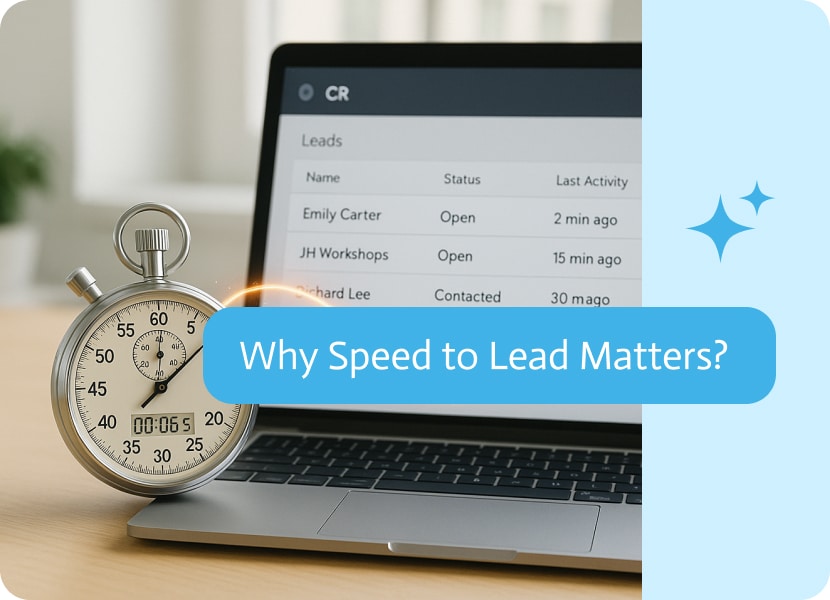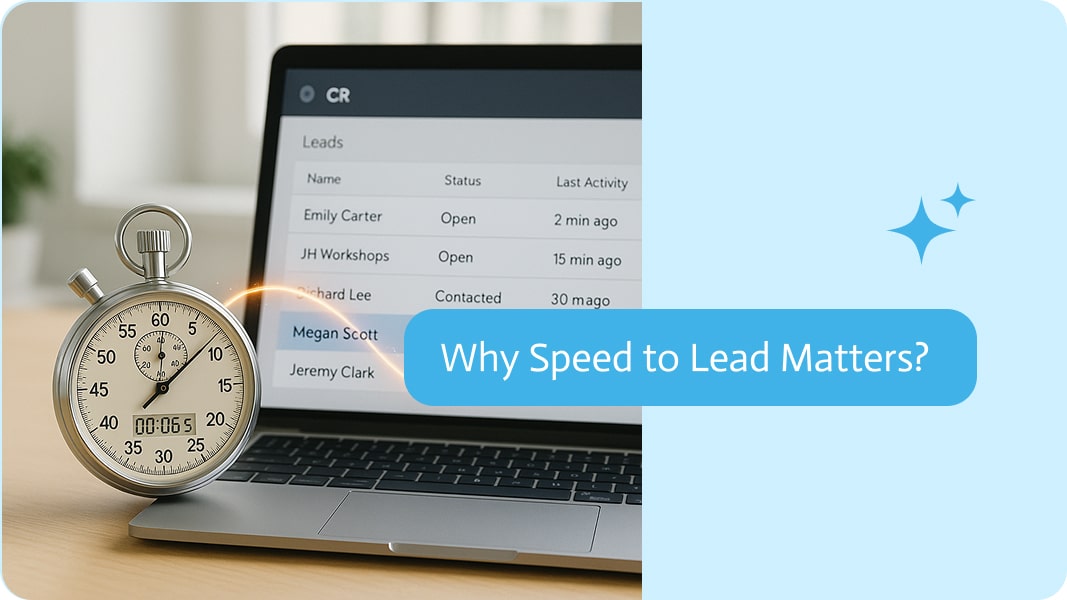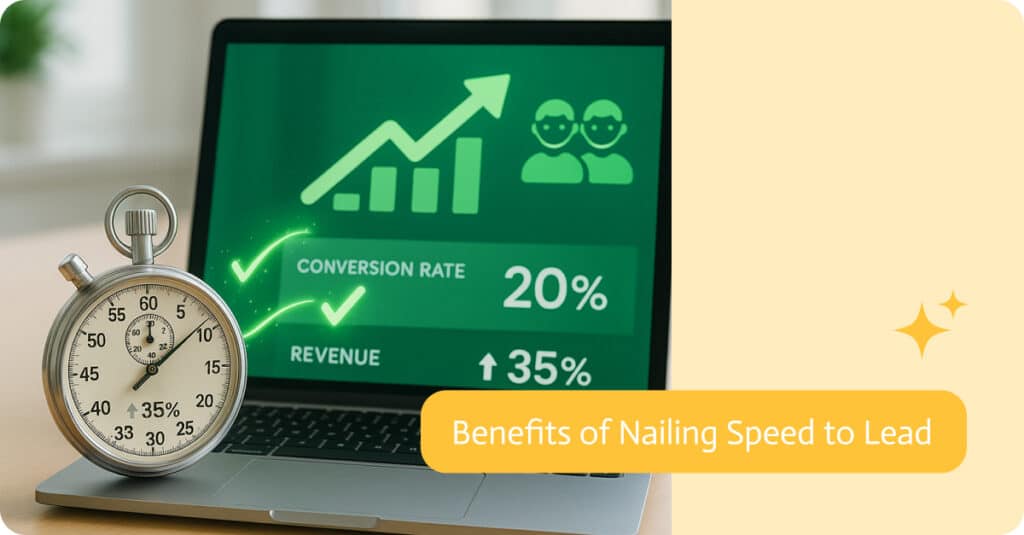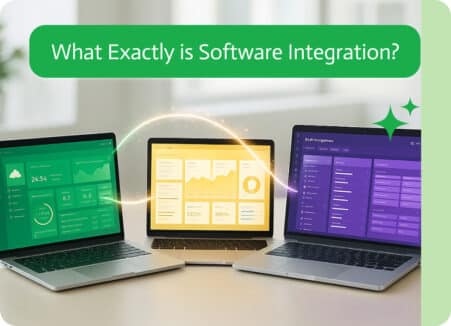

Why Speed to Lead Matters?
Imagine someone visits your website, fills out a form, and tells you they’re interested in your product or service. What happens next? If your sales team responds in five minutes, great. But if they take five hours or maybe even worse, five days, that lead has probably moved on. Maybe they’ve already bought from a competitor, that’s the brutal truth of sales today: Speed to Lead isn’t just a metric, it’s make or break in a competitive space.
So let’s break down what Speed to Lead is, why it matters more than ever, and how you can stop bleeding leads because your follow-up is slower than a snail.

What Is Speed to Lead, Really?
Speed to Lead is the time it takes for a business to respond to a new lead. Whether it’s from a contact form, chat inquiry, or phone call. It’s the clock that starts ticking the second a prospect raises their hand and says, “I’m interested.”
The faster your sales team responds, the higher the odds you’ll convert that lead into a paying customer. Sounds simple, right? Yet, in practice, most companies fumble the ball here.
The Numbers Don’t Lie
Let’s get to the number crunching:
- Responding to a lead within the first 10 minutes increases your chances of qualifying that lead by up to 391%.
- Waiting more than 30 minutes? Your odds drop by 80%.
- After 60 minutes, you might as well be yelling into the void.
Harvard Business Review found that companies that tried to contact potential customers within an hour of receiving a query were nearly 7x more likely to qualify the lead than those who waited even an hour longer. Yet, the same study revealed that only 37% of companies responded within an hour. The rest were snoozing.
Why You Need Speed in 2025
If we think about it honestly, the internet has turned us all into impatient, instant-gratification-seeking people. No one wants to wait. Not for food, not for an Uber, and definitely not for a sales rep to call them back.
Here’s why being fast is a competitive advantage:
Short Attention Spans
Leads are constantly shopping around for the best deals. The moment they submit your form, they’re probably submitting five others. If you’re not the first to respond, someone else is, and guess what? The first responder will mostly get the upper hand.
Trust is Built Early
A fast response signals that you’re attentive, reliable, and on your game. A slow response basically says, “We don’t really want your business.” People want to work with companies that show up and show initiative.
The Lead is Hot, Right Now
“Strike while the iron’s hot” is the age-old adage. That moment of contact is when the prospect is most engaged, most curious, and most likely to take action. If you delay, that spark dies out and you’ve lost the edge.
Benefits of Nailing Speed to Lead

So, what’s in it for you if you get your act together and become lightning-fast?
Higher Conversion Rates
You turn more leads into actual revenue. Fast responders simply win more often. Period.
Shorter Sales Cycles
Quick contact cuts down on the back-and-forth. Decisions happen faster because engagement starts early.
More Insightful Conversations
When you call fast, the prospect still remembers what they asked for. They’re still in that decision-making mindset, which means better, deeper conversations.
You Look Professional
A fast response shows you’ve got your stuff together. Which is critical in the fast-paced world we live in.
Better Lead Routing and Automation
When you prioritize Speed to Lead, you’re more likely to invest in tools that make your sales process smarter overall, like CRM triggers and smart routing.
The Tech Stack To Stay Fast
Thankfully, you don’t need to rely on humans alone, this is how modern companies automate speed:
- Auto-responders & Chatbots: Instant responses let the lead know you’ve got their request and will keep them talking until one of the real staff can step in to help them.
- CRM & Lead Routing: This will automatically assign leads to the right rep based on a variety of predetermined factors.
- Call Connect Tools: Platforms like Noca AI provide tools that allow you to easily integrate systems such as Hubspot, that will automatically contact your sales team as soon as a form is submitted. The rep is given all the information and is connected to the potential customer right away.
- Email + SMS Triggers: Follow-ups can be sent in a matter of seconds with content that has been tailored to the lead’s specific requests.
Is It All About Being First?
No, speed alone won’t save you if your pitch is weak or you don’t offer a quality product. But it’s the entry ticket to the game. If you’re not fast, you might not even get the chance to pitch your product or services at all.
How to Improve Your Speed to Lead
Here’s a quick list of steps you should follow:
- Audit Your Current Response Time: Don’t just guess; rather, track how long the process takes, from initial lead submission to when your rep makes first contact.
- Implement Lead Alerts: Set up notifications via Slack, email, or SMS to ensure that none of your leads fall through the cracks.
- Use Round-Robin Assignments: Don’t let leads sit waiting for one rep to become available. This won’t look good to your lead.
- Train Urgency: It’s essential that your reps treat new leads like fire alarms; they need to ensure prompt responses.
- Measure Times: Make Speed to Lead a visible, trackable KPI. So put it on dashboards, talk about it in meetings. Incentivize it if needed.
Final Thoughts: Speed Wins
In sales, although timing isn’t everything, it’s definitely a crucial step in the right direction. You can have the perfect pitch and even a great product with competitive pricing, but if you’re late to the party, you don’t even get to dance.
Speed to Lead is about honouring the attention someone gave you by giving yours in return, and fast. It’s about showing respect and showing just how much they matter to your company.
So, go check your lead response time, like right now. If it’s taking you more than five minutes, you’re leaving money on the table, and someone faster is going to be picking it up.


